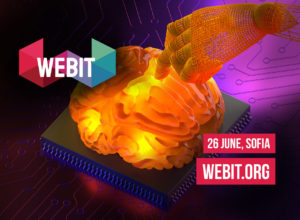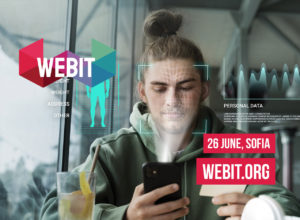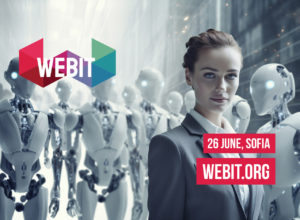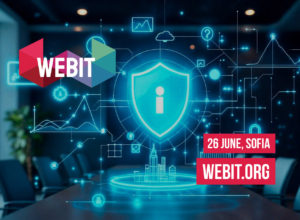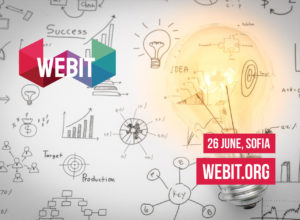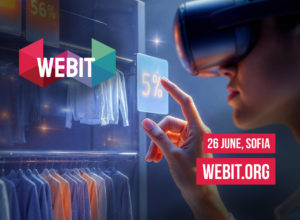Work & Education in the Era of AI and Web3: The...
The future is here, and it’s reshaping how we work, learn, and create. As AI and Web3 technologies mature, they are igniting a creative revolution that is transforming the very fabric of education and the workplace. This is not just an upgrade—it’s a paradigm shift in how human potential is unleashed.
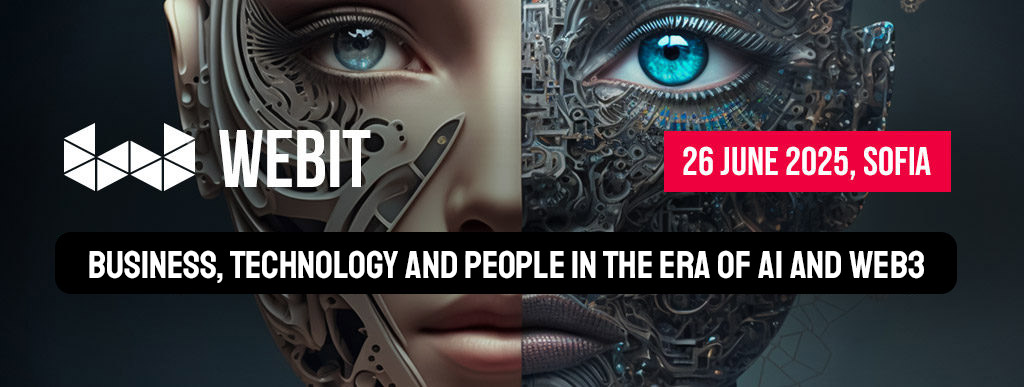
The Dawn of a New Era: AI and Web3 Combined
Artificial Intelligence (AI) has been steadily advancing for years, revolutionizing automation, data analysis, and personalized experiences. Meanwhile, Web3—decentralized, blockchain-powered internet—is rewriting the rules of ownership, transparency, and collaboration. When these forces combine, they create an environment where:- Creators are empowered with AI tools that augment imagination and productivity.
- Learners experience personalized, immersive education driven by intelligent systems and decentralized access.
- Workers and students alike co-create with machines, blending human creativity with AI precision.
AI Co-Creation Tools: The New Collaborators
At the heart of this revolution are AI-powered co-creation tools—software and platforms that do not replace humans but work alongside them as creative partners. What do these tools enable?- Idea Generation and Brainstorming AI can analyze vast datasets and trends to suggest concepts and innovations faster than any human alone.
- Content Creation and Design From writing to music, art to coding, AI assists with drafting, refining, and even imagining novel outputs.
- Personalized Learning Experiences AI tutors adapt to individual student needs, making education more effective and accessible.
- Collaborative Workflows Web3 enables decentralized teams to co-create transparently, with AI tools facilitating seamless coordination.
Impact on Work: More Creativity, Less Repetition
In the workplace, AI co-creation tools are freeing employees from mundane, repetitive tasks, allowing them to focus on high-value creative work. This leads to:- Enhanced productivity through AI-powered automation.
- Better decision-making supported by AI-driven insights.
- More innovative outcomes as humans and AI ideate together.
Impact on Education: Personalized, Accessible, and Engaging
Education is undergoing a seismic shift as AI and Web3:- Make learning tailored to each student’s pace and style
- Provide interactive, immersive content via virtual and augmented reality.
- Democratize access to high-quality resources without gatekeepers.
- Enable learners to own and share their educational achievements securely on the blockchain.
Challenges and the Road Ahead
Despite enormous potential, the rise of AI and Web3 in work and education brings challenges:- Ethical concerns around data privacy and AI bias.
- Bridging digital divides to ensure equitable access.
- Redefining roles of educators and employees in a co-creative ecosystem.
Final Thoughts: Embrace the Creative Revolution
The era of AI and Web3 is not just about technology—it’s about amplifying human creativity and connection. Those who embrace AI co-creation tools will lead the charge in building a future where work and education are more dynamic, inclusive, and inspiring. It’s time to stop fearing the machines and start creating with them. The creative revolution is underway—are you ready to co-create the future? Join the discussion and learn from global leaders in the industry on the 26th of June in Sofia. Webit: “Business, Technology and People in the Era of AI and Web3” is an exciting opportunity for industry leaders and experts to come together to discuss the latest trends and developments in the field of Web3 & AI in Work & Education. Check our ticket options here: Business, Technology and People in the era of AI and Web3
Why Payments Leaders Can’t Ignore This: Biometric & Contactless Payments –...
In the rapidly evolving world of digital finance, a powerful shift is happening right under our noses—literally. The way we pay is transforming, and the message is clear: biometric and contactless payments are not just the future—they're the now.

The Death of the Wallet as We Know It
For decades, our relationship with money was physical. Paper bills, coins, plastic cards—all tangible artifacts of a transactional world. But that world is disappearing fast. According to recent industry data, more than 70% of global consumers prefer contactless payment options, and biometric authentication is projected to secure over $18 billion worth of transactions annually by 2026. The modern consumer doesn’t want to carry a wallet—they want to be the wallet. Their fingerprint, face, or voice is now the key to their financial ecosystem.Biometric Payments: Trust Meets Technology
Biometric payments rely on unique physical identifiers—like facial recognition, fingerprints, and even iris scans—to verify identity and authorize transactions. It's a game-changer for both convenience and security. Why is this important for payments leaders?- Frictionless UX: Biometric authentication significantly reduces payment time. Think face-scanning instead of pin punching.
- Security at Scale: Biometrics are harder to spoof than PINs or passwords. It's identity-based, not possession-based.
- Fraud Reduction: A unique biometric signature drastically cuts down on fraud and identity theft.
Contactless: Pandemic-Era Preference Becomes Permanent Behavior
The COVID-19 pandemic catalyzed a major behavioral shift toward hygienic, touch-free experiences. That urgency brought contactless to the forefront. But far from being a temporary trend, contactless payments have become a global norm. From NFC-enabled cards to mobile wallets like Apple Pay, Google Pay, and now biometric-enabled platforms, consumers have made their preferences clear: they want fast, secure, and contact-free options.Your Face Is Your Wallet: What This Means for Leaders
If you're leading in the payments space and you're not actively integrating biometric or contactless technology, you're already behind. Here’s what forward-thinking leaders should focus on:- Embed Biometrics in Core Infrastructure Invest in platforms that support facial, fingerprint, or voice recognition. Think beyond mobile devices—ATMs, POS terminals, and even kiosks need to evolve.
- Double Down on Data Privacy & Compliance With biometric data comes great responsibility. Stay ahead of regulatory shifts and ensure transparency and control for users.
- Reimagine the Customer Journey The payment process isn’t just about money—it’s a moment of brand experience. Seamless, secure, and personalized is the new standard.
- Watch the Ecosystem Big tech, fintech startups, and even governments are all accelerating the shift. Stay close to innovation—partner or acquire where needed.
Final Word: Cash Isn’t Just Dying—It’s Already Dead
It’s no longer a question of if biometric and contactless will dominate, but how quickly. For payment leaders, the imperative is clear: Adapt, innovate, and lead—or risk becoming obsolete. Because in this new era of finance, your face is your wallet, and anything less is already outdated. Join the discussion and learn from global leaders in the industry on the 26th of June in Sofia. Webit: “Business, Technology and People in the Era of AI and Web3” is an exciting opportunity for industry leaders and experts to come together to discuss the latest trends and developments in the field of Web3 & AI in Econnomy. Check our ticket options here: Business, Technology and People in the era of AI and Web3
The New Age of Health: AI-Driven Longevity Research Meets Tokenized Incentives
What if every step you took, every healthy meal you ate, and every restful night of sleep didn’t just make you feel better — but also made you richer?
Welcome to the frontier of human health, where AI-driven longevity research intersects with blockchain-powered incentives. It's not just about living longer anymore. It's about living smarter, and getting rewarded for it.

From Lab Coats to Algorithms
Longevity used to be the exclusive domain of white-lab-coated scientists, gene splicing, and elite biotech firms. But AI has kicked open the doors. Today’s algorithms sift through oceans of genomic data, lifestyle factors, clinical trials, and wearables — not in years, but in seconds. They find connections no human researcher could spot. They propose personalized health interventions tailored to your unique biology. They even model how changes to your diet, sleep, or supplements could extend your life — before you make them. AI is doing for longevity what GPS did for travel: making the journey clearer, faster, and less uncertain.Enter the Token Economy of Health
But data and discovery alone aren’t enough. Knowing how to live longer is one thing. Wanting to do it — and sticking with it — is another. That’s where tokenized health incentives come in. Imagine a world where your healthy habits earn you digital tokens. Walk 10,000 steps? Get rewarded. Meditate daily? That’s a payout. Hit your sleep goals, complete a fitness challenge, or eat within your personalized metabolic window? Watch your wallet — and your well-being — grow. These tokens aren’t just digital gold stars. They can be traded, redeemed, staked for access to premium health services, or even donated to causes aligned with health equity. It’s behavioral economics meets biohacking.A Personal Health DAO? Yes, Really.
Now push the idea a little further: your health data contributes anonymously to a decentralized research community — a kind of open-source biotech DAO (Decentralized Autonomous Organization). You’re not just a patient or a user anymore. You’re a participant in global health innovation. Your anonymized data helps train better longevity models. Your tokens give you voting power on research priorities. Your body becomes a stakeholder in the future of health.From Compliance to Empowerment
Let’s be honest: people don’t like being told what to do. Traditional healthcare often sounds like a lecture. But when technology turns health into a game with real-world stakes, compliance becomes engagement. AI tells you the “what” and “why.” Tokens give you the “why now.” Together, they transform health into a feedback loop of action, reward, and insight. And with every loop, you don’t just live longer. You live better.Why This Isn’t a Gimmick
This isn’t a sci-fi wellness startup dream. Serious platforms are already integrating wearables, AI diagnostics, token ecosystems, and even personalized supplements based on biometric data. Venture capital is pouring in. Partnerships between biotech firms, blockchain developers, and behavioral scientists are forming. The tools are here. The momentum is real. You can sit and wait for the next health trend to go viral… or you can become a part of the movement — where the future of health is proactive, personalized, and profitable. Join the discussion and learn from global leaders in the industry on the 26th of June in Sofia. Webit: Business, Technology and People in the era of AI and Web3 is an exciting opportunity for industry leaders and experts to come together to discuss the latest trends and developments in the field of Web3 & AI in Health and Longevity. Check our ticket options here: Business, Technology and People in the era of AI and Web3
Your 24/7 AI Workforce: Auto-Managing Inventory While You Sleep
Imagine walking into your warehouse first thing in the morning. There are no surprises. No stockouts. No overflows. No scrambling to update spreadsheets or call vendors. Everything’s already done.
Inventory levels have been optimized. Reorders were triggered automatically. Suppliers were contacted. Forecasts updated. Anomalies flagged. You didn’t lift a finger.
Welcome to the era of the 24/7 AI workforce — the silent, tireless digital employees who never sleep, never take breaks, and never miscount a SKU.

From Chaos to Clockwork
Let’s face it: traditional inventory management is a game of organized chaos. Human error, seasonal swings, supplier delays, and manual data entry all brew into a logistical headache. AI doesn’t get headaches. Today’s AI systems don’t just track inventory — they think. They detect patterns in real-time sales, analyze historical trends, and adapt on the fly. A sudden spike in demand? Handled. A slow-moving product clogging up space? Flagged. A shipment delay halfway around the world? Alternative actions are already being calculated. You’re not managing inventory anymore. You’re managing intelligence.Real-Time Eyes, Lightning-Fast Reflexes
Picture this: an AI model constantly scanning every shelf, every bin, every transaction. It knows what’s coming in, what’s going out, and what’s sitting idle — down to the minute. Connected to IoT sensors, cameras, and cloud systems, this digital brain has the visibility and reflexes human teams can only dream of. It auto-generates purchase orders before items run low. It recommends bundling strategies to move slow stock. It prevents losses by catching anomalies instantly. It even forecasts next quarter’s demand better than your gut ever could.The Workforce That Pays for Itself
Unlike human labor, AI doesn’t scale with cost. Once deployed, your AI workforce grows with your business — not your payroll. And the best part? It learns. The more data it sees, the sharper it gets. Your unique customer behaviors, seasonal trends, supplier patterns — all absorbed, all calculated into every decision. It's like hiring an operations genius who never stops improving.It’s Not Science Fiction. It’s Now.
Some call it futuristic. But for fast-moving retailers, manufacturers, and distributors, AI-driven inventory management is already a competitive necessity. Amazon, Walmart, and industry leaders aren’t guessing what to stock — their algorithms are telling them. And now, so can yours. Whether you're running a boutique e-commerce brand or a regional supply chain, your AI team is ready to go — on duty 24/7, 365 days a year. No coffee. No sick days. No missed shipments. Just pure, intelligent automation — so you can stop chasing inventory problems, and start scaling your business with confidence. Join the discussion and learn from global leaders in the industry on the 26th of June in Sofia. Webit: Business, Technology and People in the era of AI and Web3 is an exciting opportunity for industry leaders and experts to come together to discuss the latest trends and developments in the field of Web3 & AI in Business. Check our ticket options here: Business, Technology and People in the era of AI and Web3
Zero Trust + Web3 Security Basics: MFA and Least Privilege Access
As the digital world evolves, so do the threats against it. In a landscape dominated by decentralized platforms, blockchain technologies, and smart contracts, the traditional security models are no longer enough. Enter Zero Trust — a security framework perfectly suited to the realities of Web3.
In this article, we’ll break down the basics of Zero Trust security, explain how it applies to Web3, and why Multi-Factor Authentication (MFA) and Least Privilege Access are critical pillars of any modern cybersecurity strategy.

What is Zero Trust?
At its core, Zero Trust is a simple but powerful concept: "Never trust, always verify." Instead of assuming that users or devices inside a network are safe, Zero Trust insists on continuous verification, strict access controls, and proactive threat detection — no matter where a request originates. In a Web3 world where users interact directly with decentralized applications (dApps), digital wallets, and smart contracts, assuming anything is safe by default is a recipe for disaster.Why Zero Trust is Critical for Web3
Web3 decentralizes authority and ownership, empowering users. But it also exposes new vulnerabilities:- Self-sovereign identities mean there's no corporate IT department watching over you.
- Smart contracts are immutable — once hacked, losses can be irreversible.
- Decentralized platforms have no central gatekeeper, making personal security paramount.
Two Core Components: MFA and Least Privilege Access
1. Multi-Factor Authentication (MFA)
MFA requires users to prove their identity using two or more verification methods — for example:- Something you know (password, PIN)
- Something you have (hardware key, mobile device)
- Something you are (biometrics like a fingerprint)
2. Least Privilege Access
The Least Privilege Principle means users, apps, and devices should only have the minimum access needed to perform their function — and no more. In Web3, this concept is critical:- Smart contracts should only have permissions necessary for their tasks.
- Wallet connections to dApps should be scoped and limited.
- Employees managing crypto assets or blockchain infrastructure should have tightly restricted roles.
Moving Forward: Zero Trust is Not Optional
Web3 opens incredible opportunities for innovation, ownership, and empowerment — but only for those who can secure it. Adopting a Zero Trust mindset, implementing strong MFA, and enforcing least privilege access are no longer "nice-to-haves" — they’re essential survival skills. Whether you're building a decentralized app, managing digital assets, or participating in a DAO, the message is clear: Trust nothing. Verify everything. Protect yourself and your community. The future of Web3 belongs to the secure. Join the discussion and learn from global leaders in the industry on the 26th of June in Sofia. Webit: Business, Technology and People in the era of AI and Web3 is an exciting opportunity for industry leaders and experts to come together to discuss the latest trends and developments in the field of Web3 & AI in Cybersecurity. Check our ticket options here: Business, Technology and People in the era of AI and Web3
Next-Gen Marketing That Wins
In today's hyperconnected world, traditional marketing strategies are no longer enough. Audiences demand authenticity, personalization, and value — and brands that can’t deliver are quickly left behind. Enter Next-Gen Marketing: a dynamic, tech-driven, and customer-first approach that’s redefining success.
Here’s how today’s winners are doing it — and how you can, too.

1. Data-Driven Decisions, Human-Centered Experiences
Next-gen marketing isn’t just about collecting data — it’s about using it meaningfully. Brands that win today harness data to create personalized experiences that feel human, not robotic. AI and machine learning power smarter segmentation, predictive analytics, and real-time personalization, but the focus remains on building authentic relationships. Tip: Focus on actionable insights, not just big data. Make sure every data point you collect brings you closer to understanding your customers’ needs, values, and behaviors.2. Content is (Still) King — But Context is Queen
In the next generation of marketing, content alone doesn’t cut it. You need the right content, for the right person, at the right time. That means mapping customer journeys in detail, predicting intent, and delivering value before the customer even asks for it. Tip: Invest in dynamic content strategies. Use AI-driven tools to adjust content based on user behavior, location, time of day, and even mood.3. Communities Over Campaigns
Next-gen marketing moves beyond one-off campaigns. It’s about building communities that feel genuine and inclusive. Today’s brands empower their customers, invite collaboration, and create spaces where people feel heard and valued. Tip: Focus on engagement over broadcast. Whether it’s through social media groups, ambassador programs, or exclusive events, prioritize two-way communication.4. Embracing Emerging Technologies
From AR try-ons to blockchain loyalty programs and conversational commerce via AI chatbots, the future belongs to those willing to experiment. Early adopters of new technologies set themselves apart — not by chasing hype, but by integrating tech in ways that enhance customer experience. Tip: Stay agile. Set aside part of your marketing budget specifically for testing emerging tech and new platforms.5. Purpose-Driven Brands Win Hearts
Customers, especially Gen Z and Millennials, are voting with their wallets. They want to support brands that align with their values — sustainability, diversity, mental health, and social responsibility are no longer optional. Tip: Be authentic. Choose causes that genuinely align with your brand’s mission, and weave your values into everything you do — not just your marketing.The Bottom Line: Marketing That Moves with the World
Next-gen marketing isn’t about using flashy tools or jumping on every new trend. It’s about building trust, delivering real value, and staying adaptable in an ever-evolving landscape. The brands that succeed will be those that treat customers as partners, not just buyers — and that evolve their strategies as quickly as the world around them does. Are you ready to win the next generation of marketing? Join the discussion and learn from global leaders in the industry on the 26th of June in Sofia. Webit: Business, Technology and People in the era of AI and Web3 is an exciting opportunity for industry leaders and experts to come together to discuss the latest trends and developments in the field of Web3 & AI in Business. Check our ticket options here: Business, Technology and People in the era of AI and Web3
AI & Web3 Profit Boosters: Why Green Growth Means Bigger Profits
Today’s consumers aren't just buying products — they’re buying values. In 2025, sustainability is no longer a "nice-to-have" for businesses; it's a profit strategy. Thanks to the powerful combination of AI and Web3 technologies, companies that embed green practices into their operations are not just helping the planet — they’re attracting premium buyers and boosting their bottom lines.
Here’s how AI and Web3 are driving green growth — and why it’s the smartest business move you can make right now.

1. AI-Driven Sustainability Insights
AI enables businesses to optimize their supply chains, reduce waste, and cut emissions with unprecedented precision. Machine learning models analyze vast datasets — from logistics to energy usage — and suggest eco-friendly optimizations that also save money. For example, AI tools can:- Predict inventory needs to minimize overproduction.
- Optimize delivery routes to cut fuel consumption.
- Suggest more sustainable materials during product design.
2. Blockchain-Powered Transparency
Web3 technology — especially blockchain — brings verified transparency to sustainability claims. Companies can now create immutable records that show exactly how a product was made, sourced, and shipped. Consumers increasingly demand proof over promises. Web3 smart contracts can automate and verify:- Ethical sourcing.
- Carbon footprint tracking.
- Sustainable certifications.
3. Green Loyalty Programs and Tokenized Rewards
Imagine rewarding customers not just for purchases, but for choosing eco-friendly options. Web3 allows businesses to tokenize green actions, offering digital rewards (like NFTs, carbon credits, or crypto tokens) for sustainable behaviors. Some brands already offer:- Discounts for recycling items.
- Exclusive NFTs for buying eco-friendly products.
- Token rewards for carbon-offset contributions.
4. Premium Eco-Brands Powered by AI Personalization
AI-driven personalization ensures the right green products reach the right consumers. Ethical buyers aren’t a monolith; some care most about low carbon footprints, others about ethical labor or zero-waste packaging. AI can:- Segment customers by sustainability values.
- Tailor messaging to different eco-conscious segments.
- Recommend products based on individual green priorities.
5. Sustainable Metaverse Shopping
Web3's metaverse platforms are opening up virtual showrooms that drastically reduce the carbon footprint associated with traditional retail (think: fewer physical stores, less waste). In virtual environments, brands can:- Showcase eco-products without physical stock.
- Run sustainability campaigns in creative, low-impact ways.
- Allow virtual try-ons to reduce returns and waste.
Conclusion: Sustainability = Premium Profits
In the era of AI and Web3, being green isn’t just good for the planet — it’s a strategic growth engine. Businesses that embrace sustainable practices with the help of these technologies are seeing better margins, stronger customer loyalty, and access to premium markets. The formula is clear: Green = Growth. The tools are ready: AI + Web3. The opportunity? Massive. The only question is — how fast will your business adapt? Join the discussion and learn from global leaders in the industry on the 26th of June in Sofia. Webit: Business, Technology and People in the era of AI and Web3 is an exciting opportunity for industry leaders and experts to come together to discuss the latest trends and developments in the field of AI & Web3 Profit Boosters for Businesses Check our ticket options here: Business, Technology and People in the era of AI and Web3
AI Transparency in Consumer Decision-Making: Building Trust in the Digital Age
As artificial intelligence (AI) continues to shape consumer experiences, the importance of transparency in AI-driven decision-making has never been more critical. From personalized recommendations to financial assessments, AI influences everyday choices, yet many consumers remain unaware of how these algorithms function. Ensuring AI transparency fosters trust, empowers users, and promotes ethical decision-making in the digital economy.

The Need for AI Transparency
AI models power a vast array of consumer interactions, from e-commerce recommendations to credit scoring systems. However, the opacity of these systems raises concerns about fairness, accountability, and bias. Some key reasons AI transparency is crucial include:- Consumer Trust and Confidence: Transparent AI systems provide insights into how decisions are made, allowing consumers to trust the outcomes.
- Mitigating Bias and Discrimination: Explainable AI helps identify and rectify biases in automated decision-making processes.
- Regulatory Compliance: Governments worldwide are introducing regulations like the EU’s AI Act and the FTC’s AI guidelines to ensure AI decision-making is accountable and explainable.
- Empowering Consumer Choice: When consumers understand how AI recommendations work, they can make more informed choices.
Strategies for Enhancing AI Transparency
To improve AI transparency in consumer decision-making, businesses and developers must implement the following strategies:- Explainable AI (XAI): AI models should be designed with interpretability in mind, providing users with comprehensible explanations of decisions.
- User-Centric Disclosure: Companies should offer clear, accessible disclosures about AI-driven decisions, including data sources and reasoning.
- Ethical AI Frameworks: Organizations should adopt AI ethics guidelines that prioritize fairness, accountability, and transparency.
- Third-Party Audits: Independent audits of AI systems can validate transparency claims and ensure compliance with ethical standards.
- Consumer Control Mechanisms: Users should have options to opt out of AI-driven decisions or modify algorithmic preferences based on their needs.
The Future of AI Transparency
As AI adoption grows, transparency will become a defining factor in consumer trust and regulatory compliance. Businesses that prioritize explainability and fairness in AI-driven decision-making will gain a competitive advantage while ensuring ethical consumer interactions. By fostering transparency, AI can be a tool for empowerment rather than uncertainty, shaping a more responsible digital economy.Conclusion
AI transparency is essential in modern consumer decision-making, ensuring trust, fairness, and accountability. By implementing explainable AI strategies, ethical guidelines, and regulatory compliance measures, businesses can create AI systems that consumers understand and trust. As the digital landscape evolves, transparency will be key to responsible AI innovation and sustainable consumer relationships. Join the discussion and learn from global leaders in the industry on the 26th of June in Sofia. Webit: Business, Technology and People in the era of AI and Web3 is an exciting opportunity for industry leaders and experts to come together to discuss the latest trends and developments in the field of the AI Transparency in Consumer Decision-Making. Check our ticket options here: Business, Technology and People in the era of AI and Web3
How Web3 and AI Are Transforming Everyday Shopping: 2025 Trends
In 2025, the shopping industry stands at the forefront of a digital revolution, driven by two unstoppable forces: Web3 and Artificial Intelligence (AI). Both technologies are no longer buzzwords — they are reshaping how consumers interact with brands, make purchasing decisions, and experience retail, both online and offline.
Here’s a look at the key trends shaping the future of shopping through the lens of Web3 and AI.

1. Personalized Shopping with AI
AI has elevated personalization from basic product recommendations to hyper-personalized experiences. Modern AI algorithms now consider not just past purchases but mood, lifestyle shifts, and even health data (with user consent) to suggest products. Brands like Nike and Sephora use AI to create dynamic storefronts that adjust based on who’s browsing — offering tailored content, personalized promotions, and real-time styling advice. Trend to watch:- Emotion AI is being integrated into shopping platforms, detecting customers’ moods through voice and facial cues to adjust offers and interactions accordingly.
2. Blockchain-Enabled Loyalty Programs
Forget the old punch cards. Retailers are turning to blockchain-based loyalty programs where points are tokenized. Customers can trade, sell, or redeem these tokens across different brands or ecosystems. For example, Starbucks Odyssey is already piloting a Web3 loyalty program combining NFT rewards with real-world experiences. Expect more brands to follow suit, offering interoperable loyalty points powered by decentralized systems. Trend to watch:- Tokenized customer engagement, where exclusive drops, events, or early access are unlocked through loyalty tokens.
3. Virtual Shopping Experiences in the Metaverse
Web3 has fueled the rise of virtual malls and metaverse stores where customers can shop using avatars. Big brands like Gucci, Adidas, and Walmart are experimenting with virtual storefronts where users can try on outfits, attend digital events, and purchase real or virtual goods. These metaverse stores aren't just novelty — they offer deep data analytics on consumer behavior in virtual spaces, helping brands fine-tune their marketing. Trend to watch:- Phygital experiences (physical + digital) where a metaverse interaction leads to a real-world product delivery.
4. AI-Driven Customer Service with Web3 Verification
AI-powered chatbots have evolved into intelligent shopping assistants. Powered by natural language processing (NLP) and contextual awareness, they can handle complex queries, process payments, and offer personalized advice. Meanwhile, Web3 is adding identity layers to these interactions — ensuring that conversations and transactions are verifiable and private through decentralized IDs (DIDs). Trend to watch:- Verified shopping profiles that travel with consumers across platforms, preserving preferences and earning loyalty rewards without compromising data privacy.
5. Ethical, Transparent Shopping with Web3
Today's consumers demand transparency. Blockchain allows retailers to offer proof of origin for goods — whether it’s ethically sourced coffee, sustainable fashion, or conflict-free electronics. Through smart contracts, buyers can instantly verify the authenticity, sustainability, and ethical compliance of their purchases. Trend to watch:- Eco-friendly NFTs that provide digital proof of eco-conscious purchases, adding a collectible layer to sustainable shopping.
Conclusion: The Future Is Here
The convergence of Web3 and AI is not a distant future — it’s actively transforming how we shop every day. Consumers are gaining more control, personalization is becoming smarter, and ethical practices are becoming provable rather than promised. For brands, adapting to these trends isn't optional. It's a survival strategy. The winners in 2025 and beyond will be those who harness the power of Web3 and AI to create trustworthy, personalized, and immersive shopping experiences. Join the discussion and learn from global leaders in the industry on the 26th of June in Sofia. Webit: Business, Technology and People in the era of AI and Web3 is an exciting opportunity for industry leaders and experts to come together to discuss the latest trends and developments in the field of Web3 & AI in Everyday Life. Check our ticket options here: Business, Technology and People in the era of AI and Web3
Green Hospitals & Smart Clinics: The Future of Sustainable and Intelligent...
The healthcare industry is undergoing a massive transformation. Driven by urgent environmental concerns and rapid technological advancements, hospitals and clinics are evolving into green and smart facilities — reimagining what it means to deliver care in the 21st century.

What Are Green Hospitals?
Green hospitals are healthcare facilities designed, built, and operated with a focus on sustainability. They aim to minimize their environmental impact while creating healthier spaces for patients, staff, and communities. Key characteristics of green hospitals include:- Energy Efficiency: Adoption of renewable energy sources like solar panels, energy-efficient HVAC systems, and smart lighting.
- Sustainable Construction: Use of eco-friendly materials, water-saving technologies, and designs that reduce carbon footprints.
- Waste Management: Advanced recycling systems, reduction of medical waste, and proper disposal of hazardous materials.
- Healthy Indoor Environments: Improved air quality, non-toxic materials, and spaces that promote healing and wellbeing.
What Are Smart Clinics?
Smart clinics leverage technology to optimize operations, enhance patient experience, and improve health outcomes. They incorporate:- IoT-Connected Devices: Monitoring patient vitals in real-time, managing building systems (temperature, lighting, air quality) more efficiently.
- AI-Powered Diagnostics: Faster, more accurate diagnoses through machine learning and predictive analytics.
- Telemedicine Services: Remote consultations that increase access to care while reducing the need for travel and lowering carbon emissions.
- Data-Driven Personalization: Using patient data securely to tailor treatments and monitor chronic conditions proactively.
- Automation: Streamlining administrative tasks such as scheduling, billing, and patient flow management.
Why the Merge of Green and Smart Matters
Combining green principles with smart technologies creates a powerful synergy:- Reduced Operational Costs: Smart energy management systems help hospitals save significantly on utility bills.
- Enhanced Patient Outcomes: Studies show that natural lighting, clean air, and noise reduction all contribute to faster healing — outcomes that both green and smart designs optimize.
- Increased Resilience: Smart systems can predict equipment failures or supply shortages, while sustainable infrastructure is better equipped to withstand environmental disasters.
- Stronger Community Trust: Patients increasingly prefer healthcare providers who demonstrate environmental and social responsibility.
Challenges Ahead
Despite the clear benefits, the transition isn't without obstacles:- High Initial Costs: Sustainable and smart technologies often require significant upfront investment.
- Complex Integration: Marrying legacy healthcare systems with cutting-edge technologies can be complicated.
- Data Security: Smart clinics must prioritize cybersecurity to protect sensitive patient information.
- Training and Change Management: Staff need education and support to adapt to new systems and workflows.
Conclusion
Green hospitals and smart clinics represent the future of healthcare — sustainable, efficient, and patient-focused. As environmental and technological pressures continue to rise, the institutions that invest in these innovations today will lead the healthcare landscape of tomorrow. Building a healthier world starts with creating healthier places to heal. Join the discussion and learn from global leaders in the industry on the 26th of June in Sofia. Webit: Business, Technology and People in the era of AI and Web3 is an exciting opportunity for industry leaders and experts to come together to discuss the latest trends and developments in the field of Healthcare. Check our ticket options here: Business, Technology and People in the era of AI and Web3
